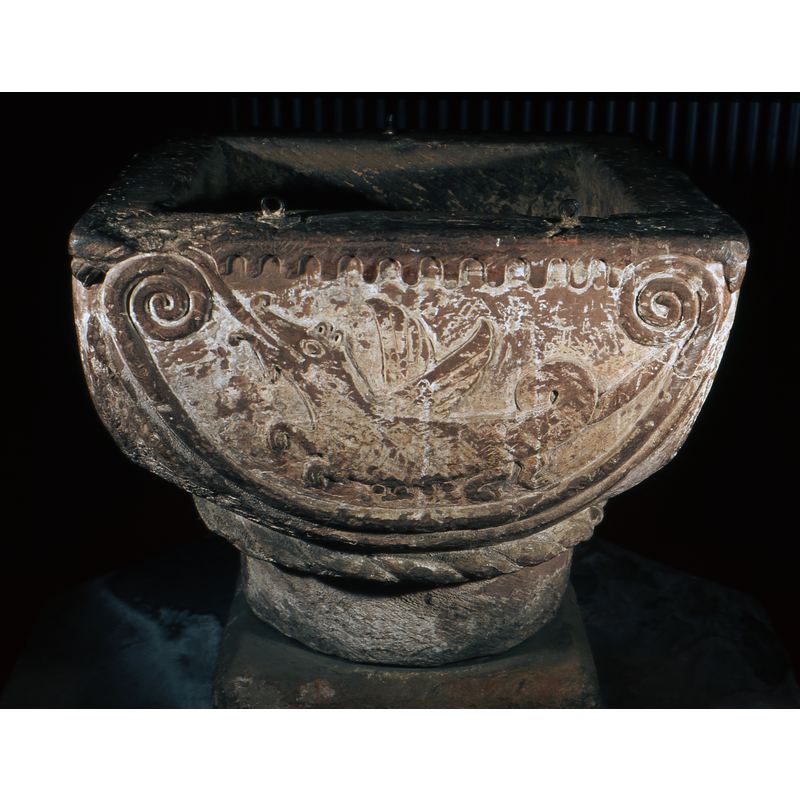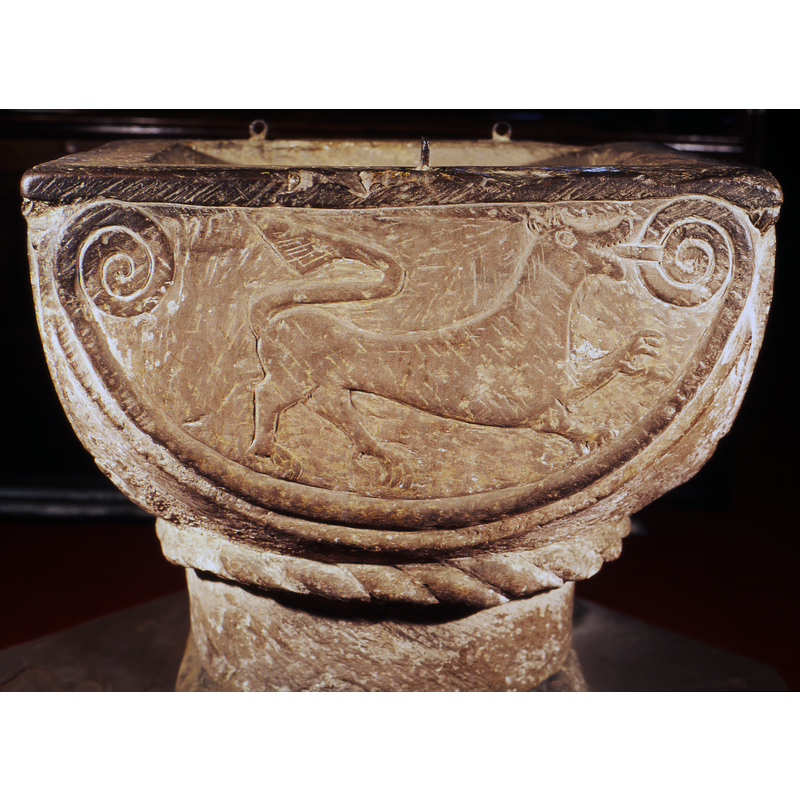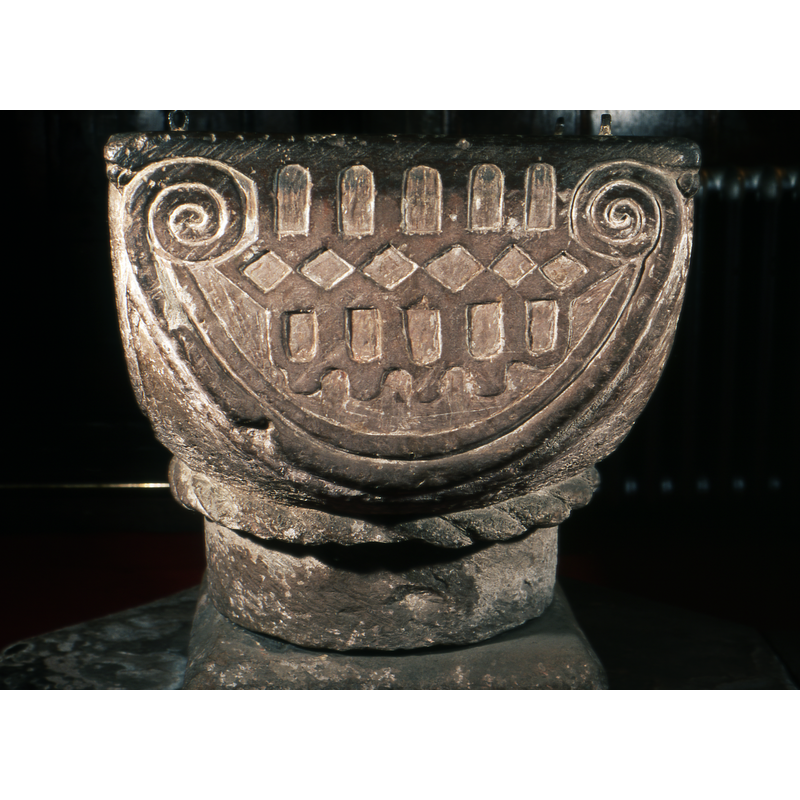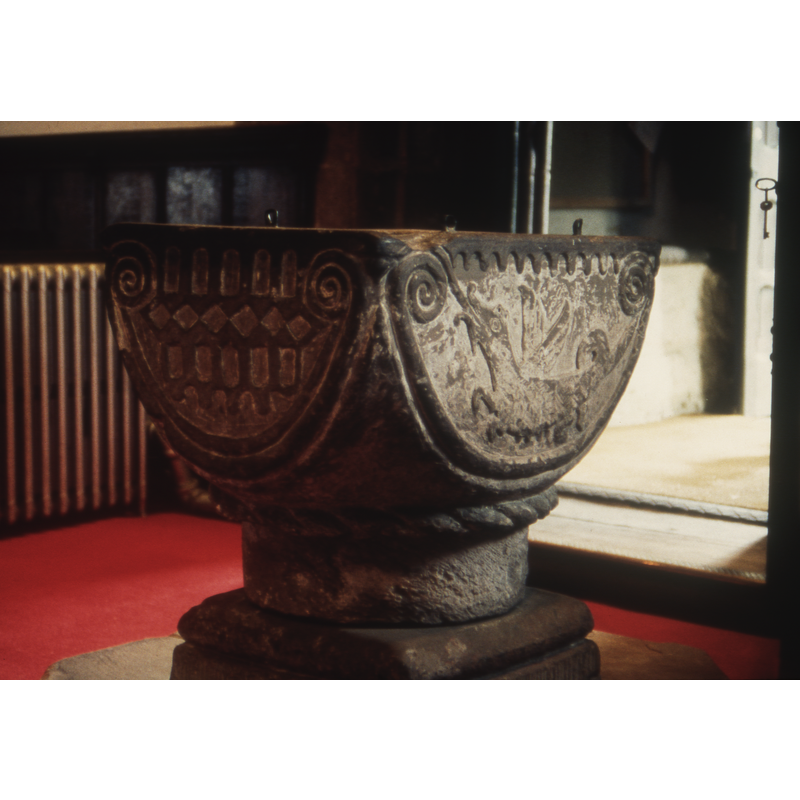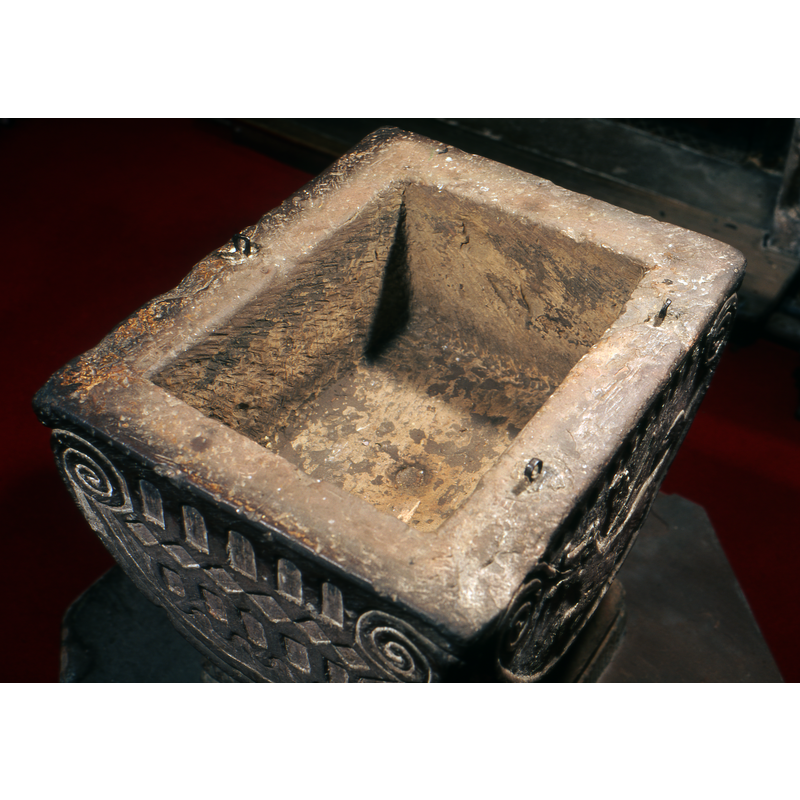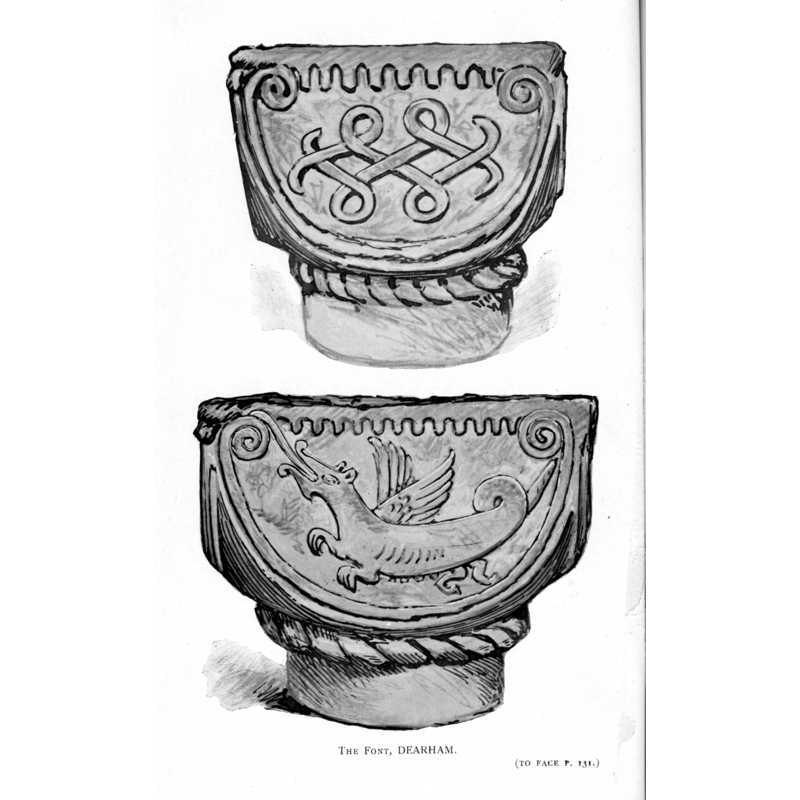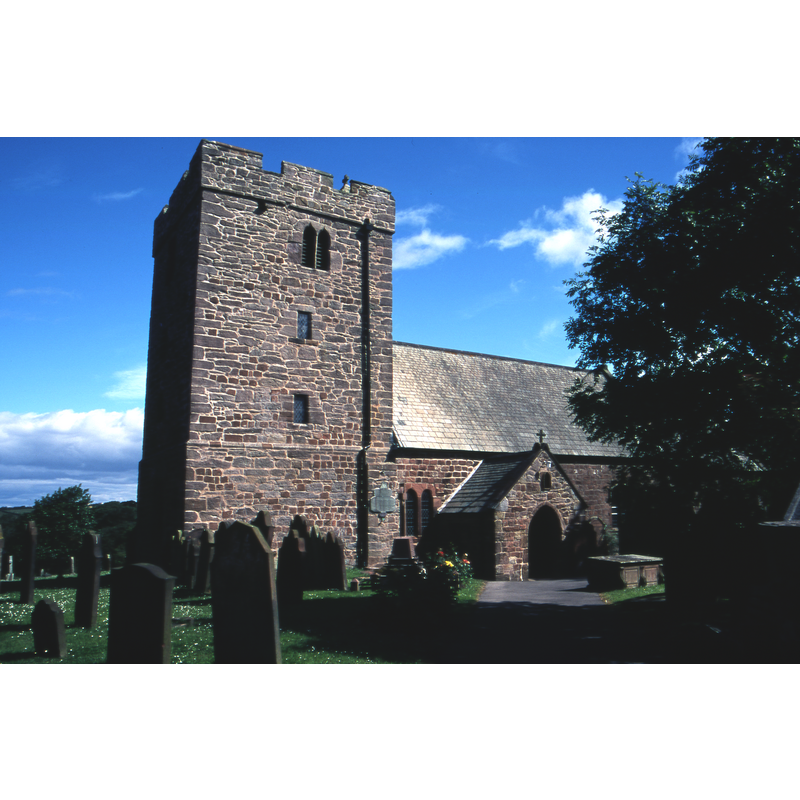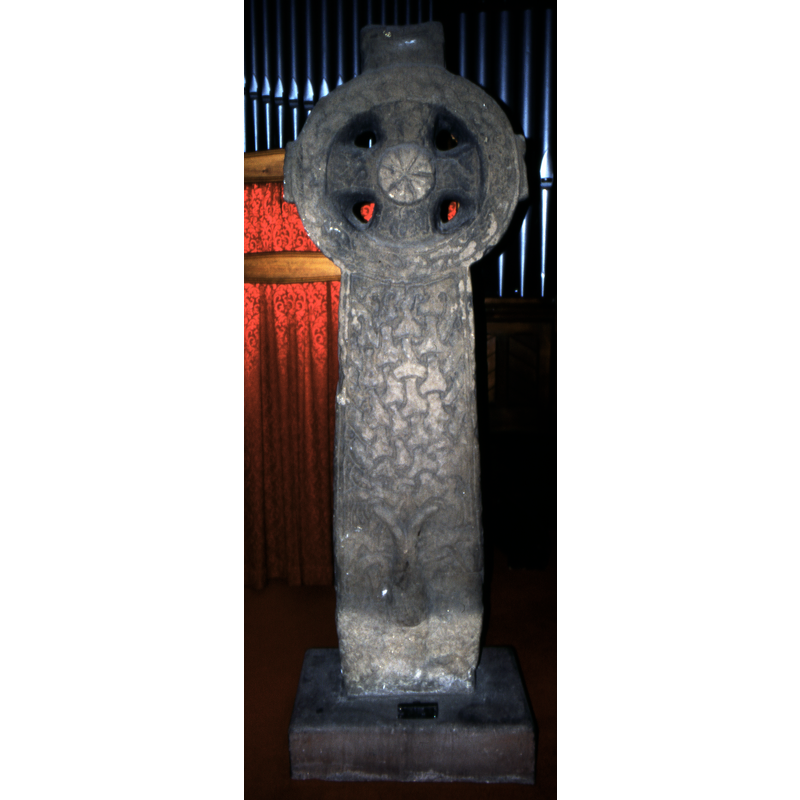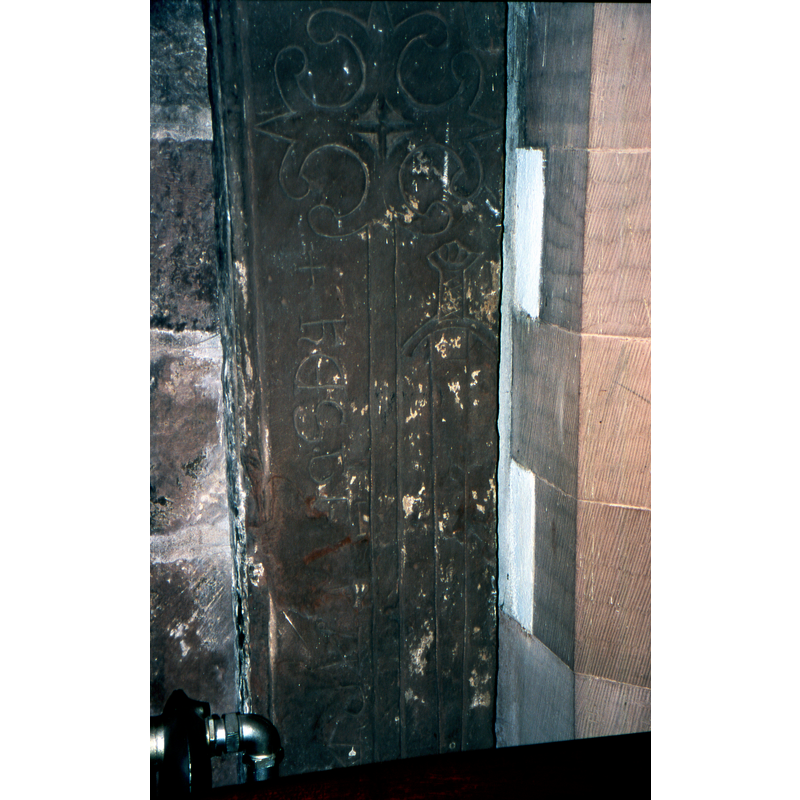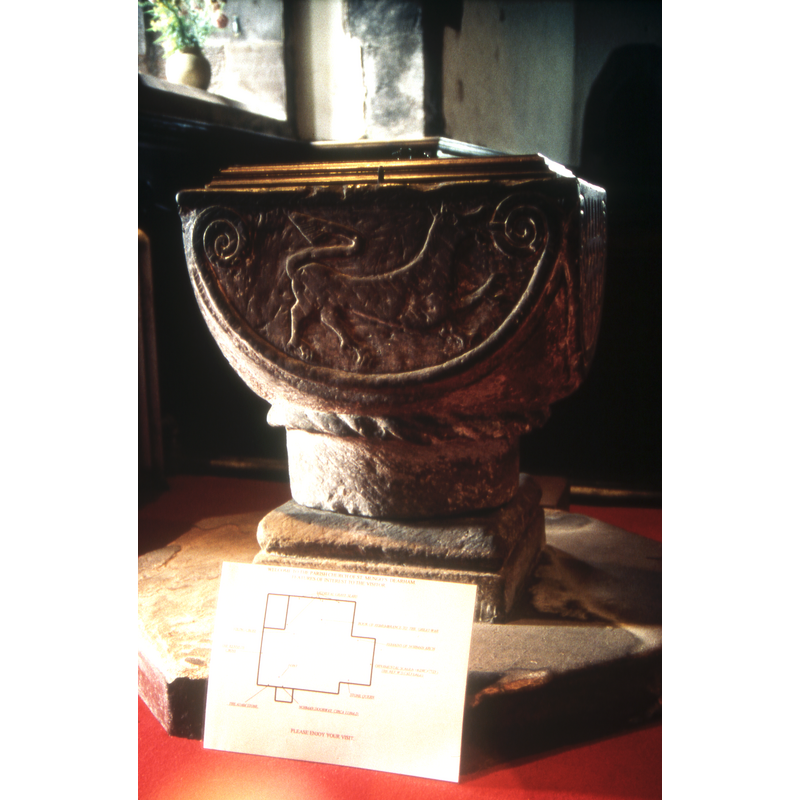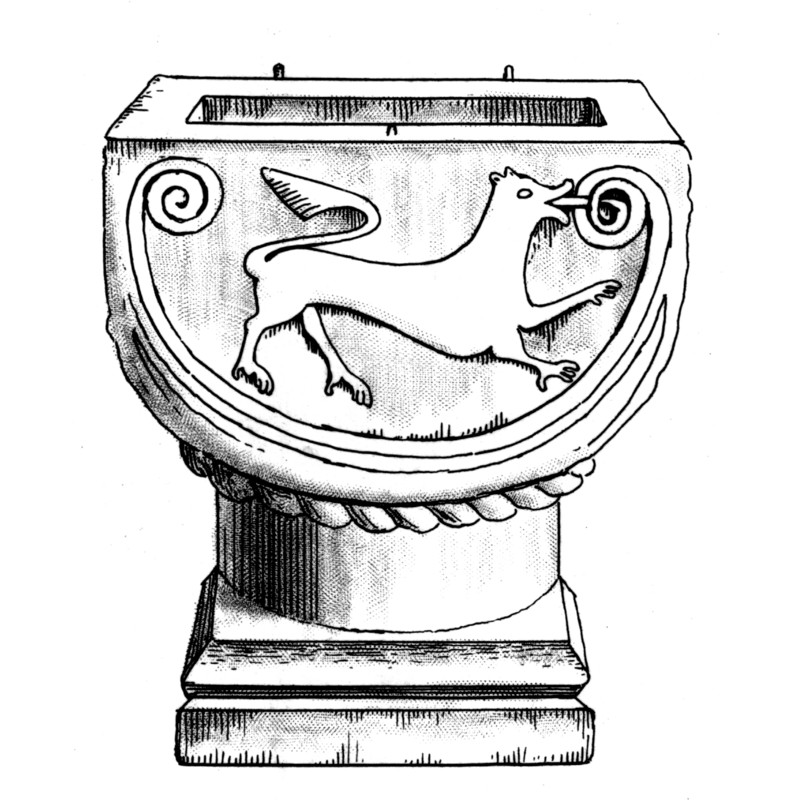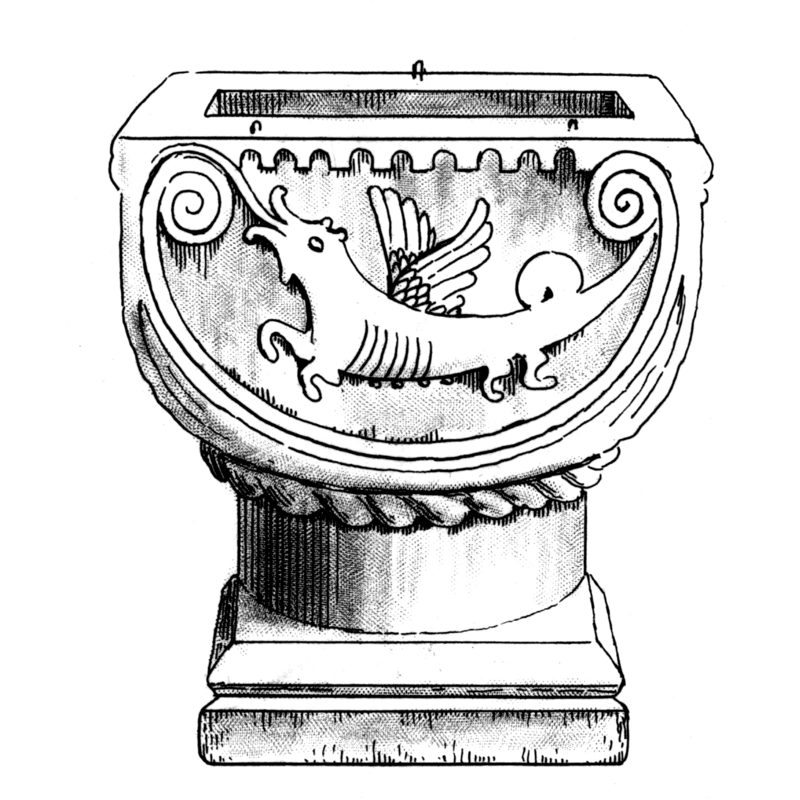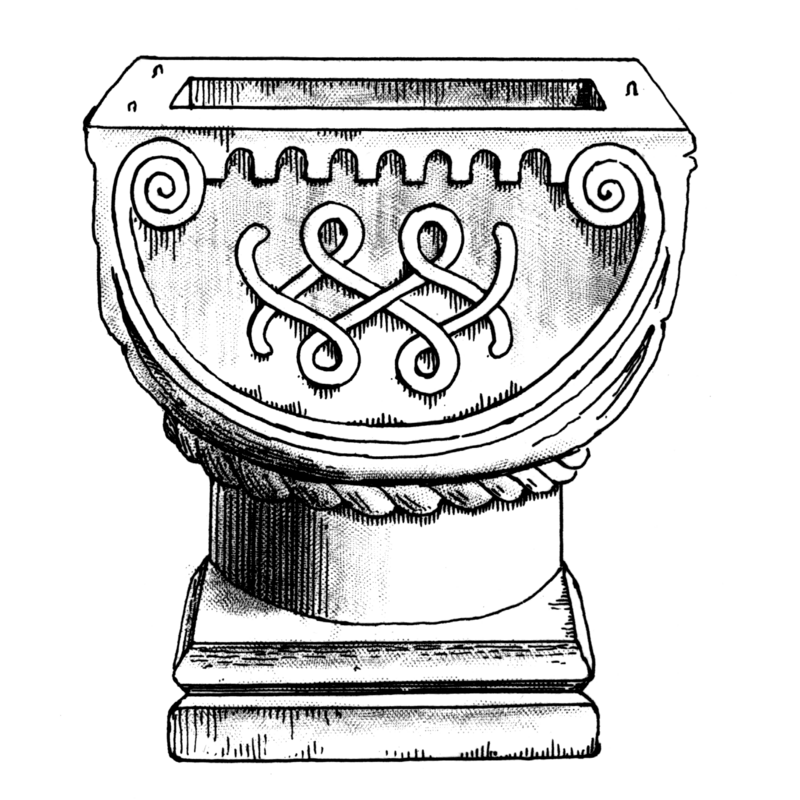Dearham / Deerham
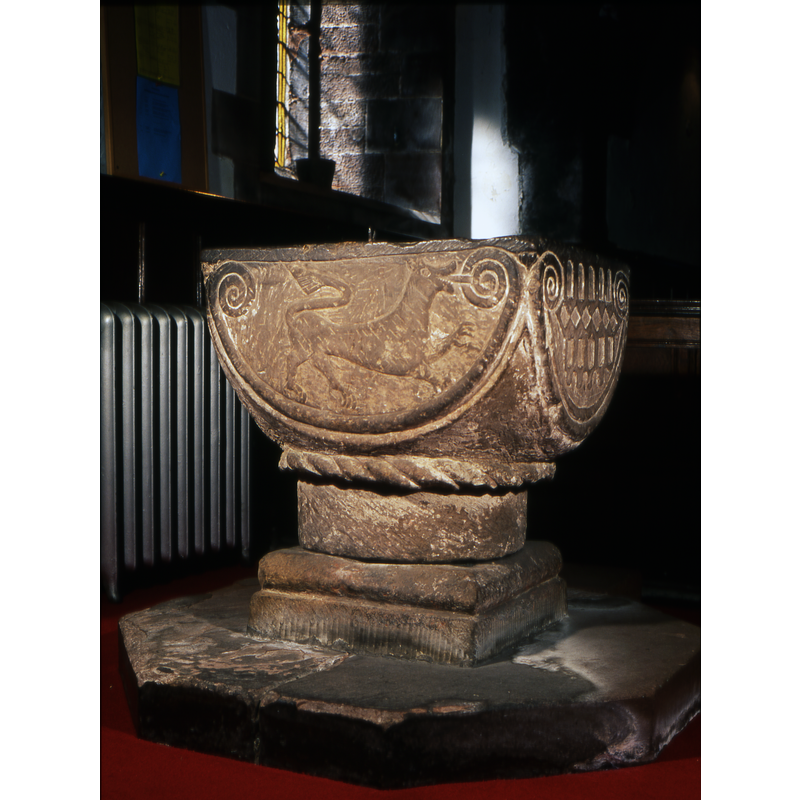
Image copyright © Baptisteria Sacra Index, 2023
Results: 20 records
animal - fabulous animal or monster - dragon - passant - spewing flames from its mouth
animal - mammal - lion - rampant
design element - motifs - geometric
design element - motifs - interlace
design element - motifs - scroll - 4
view of basin
view of basin - interior
view of basin - side 2 and 3
view of church exterior - south view
view of church interior - cross
view of church interior - tombstone
view of font
view of font
view of font
view of font - side 1
view of font - side 2
view of font - side 3
INFORMATION
FontID: 01527DEA
Object Type: Baptismal Font1
Church/Chapel: Parish Church of St. Mungo
Church Patron Saints: St. Kentigern [aka Mungo]
Church Location: Street Mungo's Church, Dearham, Maryport CA15 7HX, United Kingdom
Country Name: England
Location: Cumbria, North West
Directions to Site: Located about 5 kms E of Maryport, about 13 kms ENE of Workington, 10 kms WNW of Cockermouth
Historical Region: formerly Cumberland
Font Location in Church: Just inside the SW entranceway, to the left
Century and Period: 11th - 12th century, Pre-Conquest? / Norman?
Cognate Fonts: Related fonts in the same county at Aspatria, Bowness-on-Solway and Crosscanonby
Credit and Acknowledgements: We are grateful to the Thomas Fisher Rare Books Library for access to the copy of Lysons’ Magna Britannia, and to Jim Ingram, of the Preservation Services, Robarts Library, for the digital imaging of Lysons’ illustrations]. We are also grateful to Ann and Tom Heck for the additional information and photographs of this font
Church Notes: On-site notes from Tom & Ann Heck: "The church contains an 'Adam store' dated to 850-950 (?), the 'Kenneth Cross' illustrating the legend of a 6th century hermit, and a 'Viking Cross' with the world ash, Yggdrasil climbing the shaft and a cross above it" (August 2000)
Font Notes:
Click to view
Noted in Lysons (1806-1833) as one of several “fonts in the churches of Cumberland [Bowness, Aspatria, Cross-Canonby and Dearham] which may be referred to Saxon times [...] all of a square form”. Noted in Paley (1844) as one of a few fonts on which the salamander appears: "this creature typifies Baptism 'with the Holy Ghost and with Fire'" although, Paley adds, they are "usually represented on fonts as a lizard or a serpent-like animal." Lewis' Dictionary of 1848 reports "an ancient and curiously carved font". Calverley (1899) refers to the dragon as "the sea-monster, Cetus, symbolizing the water of baptism", and "shows what became of the Irish-Norse dragon, in the hands of later generations, before the ideas were finally abandoned for the foliage of medieval work". Described in Cox & Harvey (1907) as a "remarkable early Norman font". Bond (1908) mentions it as having salamanders or dragons depicted on it. Described in Cox (1913) as Norman, and with reference to Lysons. Listed in Tyrrell-Green (1928) as a square mounted font of the Norman period "having rude diaper-work and grotesque monsters with volutes at the angles. Pevsner (1967) refers to this font as Norman and notes that "the style is connected with Yorkshire, e.g. Fishlake, which is c.1170." On-site notes: the basin has a rectangular upper plant, the sides forming semi-circles and becoming round at the rope-motif torus where it meets the base; there is a short cylindrical upper base, all of it one piece . The top plinth is square and there is a second octagonal plinth with a "kneeling" stone. The four sides of the basin have fine carving, all having a stylized vine framing the rounded lower part of the side and curling at both ends: 1)architectural motif combining a blind arcade of 5 arches at top, six diamonds on a row and 5 rectangles at the bottom; 2)dragon with double coil in its tail facing left and spewing flames from its mouth; 3)interlace pattern; 4)rampant lion facing right. [We are grateful to the Thomas Fisher Rare Books Library for access to the copy of Lysons’ Magna Britannia, and to Jim Ingram, of the Preservation Services, Robarts Library, for the digital imaging of Lysons’ illustrations]. [NB: We are also grateful to Ann and Tom Heck for the additional information and images of this font]
COORDINATES
Church Latitude & Longitude Decimal: 54.714, -3.4412
Church Latitude & Longitude DMS: 54° 42′ 50.4″ N, 3° 26′ 28.32″ W
UTM: 30U 471577 6063056
MEDIUM AND MEASUREMENTS
Material: stone, limestone
Number of Pieces: two
Font Shape: rectangular (mounted)
Basin Interior Shape: rectangular
Basin Exterior Shape: rectangular
Drainage Notes: The basin well is not lined
Rim Thickness: 10 cm
Diameter (inside rim): 38 x 51 cm (rectangular)
Basin Depth: 30 cm
Height of Basin Side: 44 cm
Basin Total Height: 44 cm
Height of Base: 31 cm (includes rope motif torus
Height of Central Column: 15 cm
Font Height (less Plinth): 75 cm
Font Height (with Plinth): 87 cm
Trapezoidal Basin: 57-58 x 70-71 cm
Notes on Measurements: BSI. [NB: the square volume of the base is counted as a plinth].
LID INFORMATION
Notes: 3 original metal hinges still left on the upper rim.
REFERENCES
Bond, Francis, Fonts and Font Covers, London: Waterstone, 1985 c1908
Calverley, William Slater, Notes on the early sculptured crosses, shrines and monuments in the present diocese of Carlisle, Kendal: T. Wilson, 1899
Comber, Michael, "The Church of Today: the Parish of Dearham", [1980?]
Cox, John Charles, Cumberland and Westmorland, London: George Allen & Co. Ltd., 1913
Cox, John Charles, English Church Furniture, New York: E.P. Dutton & Co., 1907
Kelly, Joseph S., "A Short History of Dearham", [1980?]
Lewis, Samuel, A Topographical Dictionary of England, Comprising the Several Counties, Cities, Boroughs, Corporate and Market Towns, Parishes, Chapelries, and Townships, and the Islands of Guernsy, Jersey, and Man, with Historical and Statistical Descriptions [...], London: S. Lewis, 1831
Lysons, Daniel, Magna Britannia, being a concise topographical account of the several counties of Great Britain, London: Printed for T. Cadell and W. Davies, 1806-1822
Moule, Thomas, The English counties delineated; or, A topographical description of England [...], London: George Virtue, 1837 [vol. 2]
Paley, Frederick Apthorp, Illustrations of Baptismal Fonts, London, UK: John van Voorst, 1844
Pevsner, Nikolaus, Cumberland and Westmorland, Harmondsworth: Penguin Books, 1967
Tyrrell-Green, E., Baptismal Fonts Classified and Illustrated, London: Society for Promoting Christian Knowledge: The Macmillan Co., 1928
